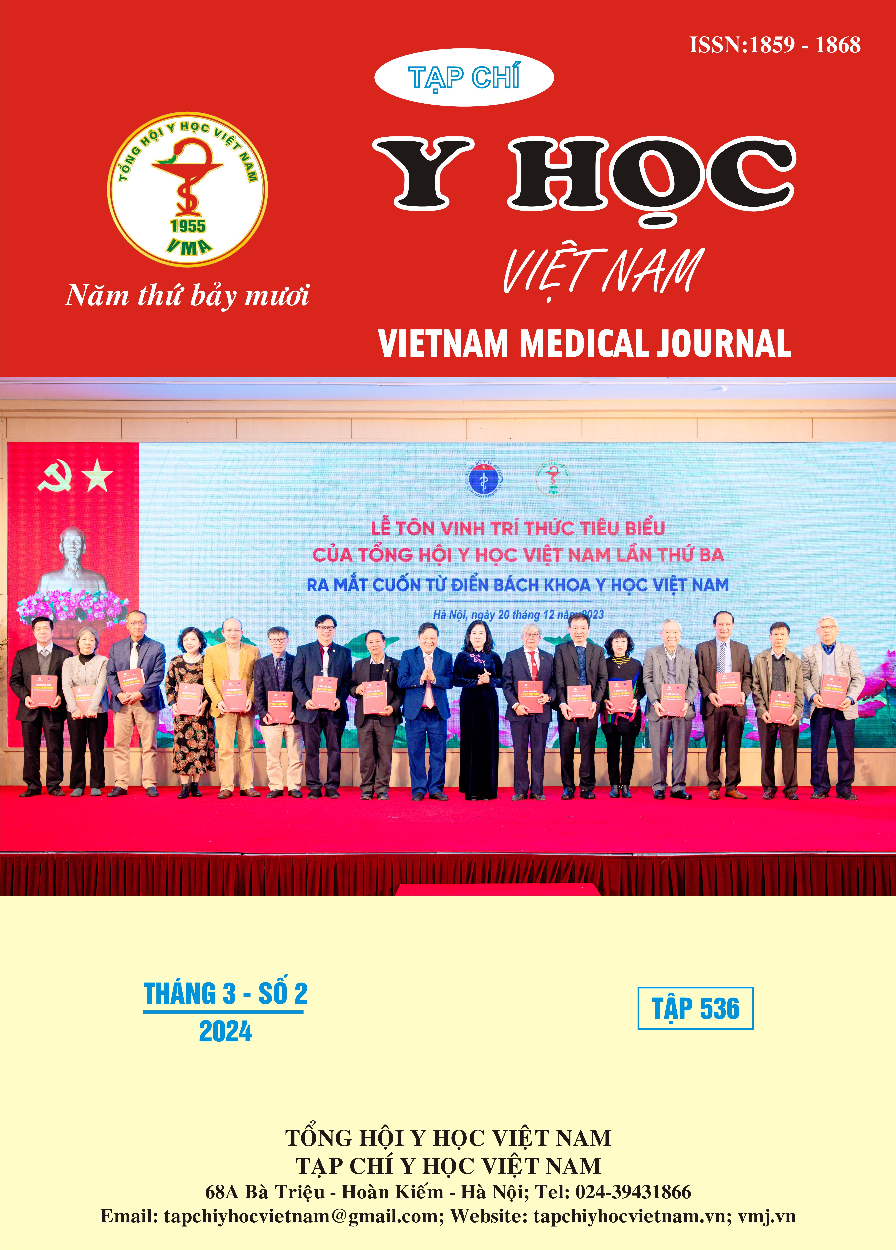RESEARCH OF TOPICAL BRINZOLAMIDE 1% IN THE TREATMENT OF CENTRAL SEROUS CHORIORETINOPATHY
Main Article Content
Abstract
Purpose: Evaluate the effectiveness of topical brinzolamide in the treatment of central serous chorioretinopathy. Methods: Prospective, randomized, controlled intervention study of 58 eyes (54 patients) diagnosed with serous central chorioretinopathy at Vietnamese National Institute of Ophthalmology from November 2022 to August 2023. Treated cases (n = 35) had received topical brinzolamide 1% two times a day for 3 months while controls (n=23) were observed without active intervention. Results: At the main study end point of 3 months, treated patients who received topical brinzolamide 1% had significantly faster resolution of subretinal fluid with a mean central macular thickness in central macular thickness (from 442.11 ± 122.36 µm to 264.02 ± 69.28 µm) compared to observed controls (from 483.32 ± 129.69 µm to 365.37 ± 108.91 µm) (p=0.021). Treated cases had greater reduction of subretinal fluid height (from 242.82 ± 128.02 µm to 42.12 ± 40.02 µm) compared to observed controls (from 251.22 ± 120.02 µm to 176.45 ± 98.09 µm) (p=0.003). A higher proportion of treated patients achieved complete resolution of subretinal fluid compared to observed controls (77.1% vs. 34.8%, = 0.034). However, change in mean visual acuity at 3 months was similar in both groups (p = 0.071). There was no significant change in intraocular pressure in either group (p= 0.216). Conclusion: Topical brinzolamide 1% had an improvement in function and anatomy in the treatment of central serous chorioretinopathy. Topical brinzolamide 1% is a safe choice for patients with central serous chorioretinopathy.
Article Details
References
2. Liew G. QG, Gillies M, et al. (2013), Central serous chorioretinopathy: a review of epidemiology and pathophysiology. Clin Exp Ophthalmol. 41(2): p 201-214.
3. Nicholson B. NJ, Forooghian F, et al. (2013), Central serous chorioretinopathy: update on pathophysiology and treatment. Surv Ophthalmol 58(2): p: 103-126.
4. Yavas G.F. KT, Kasikci M, et al. (2014), Obstructive sleep apnea in patients with central serous chorioretinopathy. Curr Eye Res. 39(1): p 88-92.
5. Wolfensberger TJ, Mahieu I, Jarvis-Evans J, et al. Membrane-bound carbonic anhydrase in human retinal pigment epithelium. Invest Ophthalmol Vis Sci. 1994; 35: 3401–3407..
6. Liew G, Ho IV, Ong S, Gopinath B, Mitchell P. Efficacy of Topical Carbonic Anhydrase Inhibitors in Reducing Duration of Chronic Central Serous Chorioretinopathy. Transl Vis Sci Technol. 2020;9(13):6.
7. Wuarin R, Kakkassery V, Consigli A, et al, Combined Topical Anti-inflammatory and Oral Acetazolamidee in the Treatment of Central Serous Chorioretinopathy, Optom Vis Sci, 2019;96(7):500-506.
8. Rubin GS. Comparison of Acuity, Contrast Sensitivitt, and Disability Glare Before and After Cataract Surgery. Arch Ophthalmol. 1993; 111(1):56.


